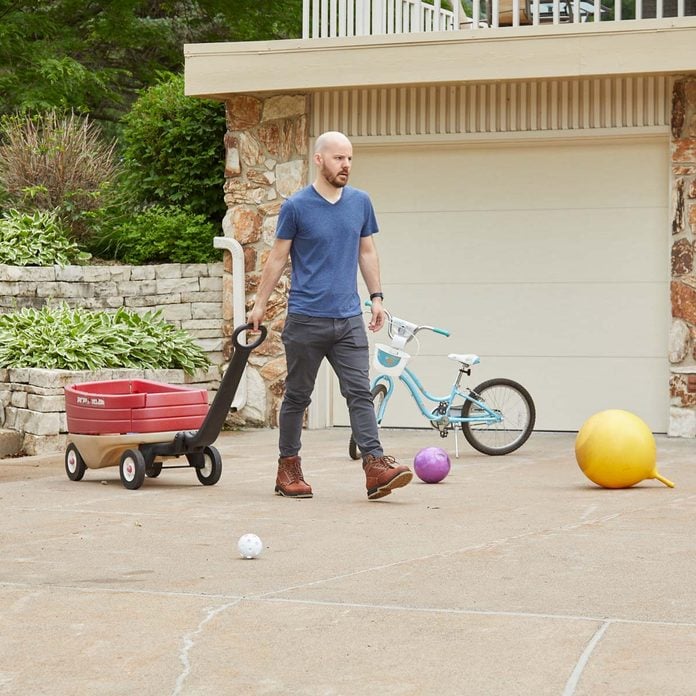
Time it Right
Pressure washers use a lot of water. If your water is supplied by a well, it’s best to tackle this job when other water use is light. You don’t want to deplete your well on laundry day or when your have a house full of guests. And if you’re in a drought, you may want to postpone for a few months.

Tarp Your Plants
Plants are one of those things you should never pressure wash anyway, and concrete detergent can harm plants. So, before you start using your pressure washer, cover them with tarps. I used canvas drop cloths, but they can be expensive. For a cheap, lightweight option, use a roll of painter’s plastic. Remove the tarps as soon as possible to avoid overheating the plants.

Blow Away Debris
Moving piles of debris with a pressure washer is a waste of time and water. Instead, use a leaf blower to clear away smaller debris like leaves, rocks, sticks and mulch. You can use a broom, but a leaf blower is faster and easier. Don’t rush this step, and clear as much as possible.
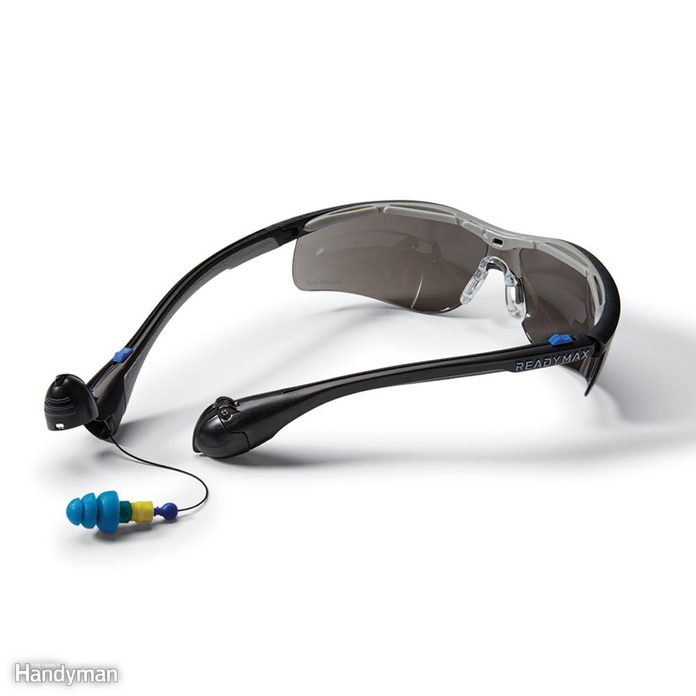
Wear Safety Gear
Pressure washers are loud, the water and other debris can splash back in your face, and you’ll be stepping around slick, soapy water. Always wear safety glasses, hearing protection and close-toe shoes with good traction. A powerful pressure washer can actually cut skin. Use it with caution, and keep it away from children.
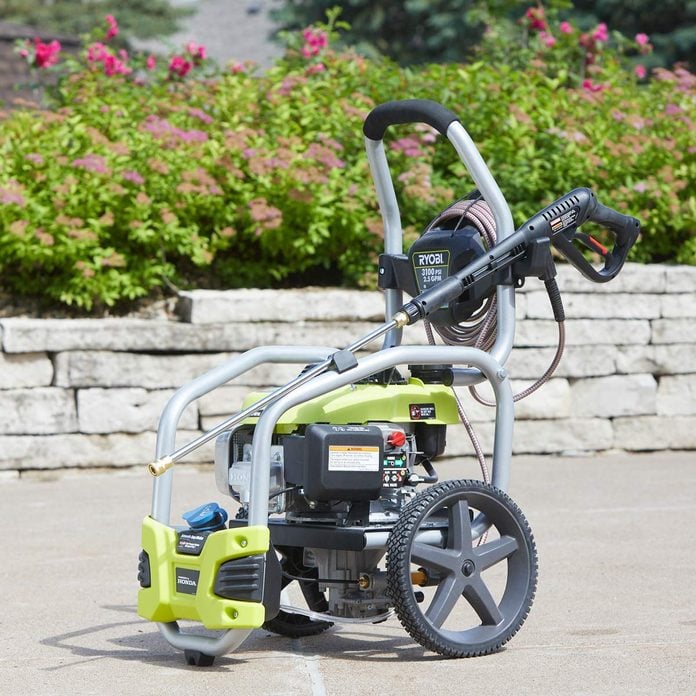
Use Larger Pressure Washers for Concrete
The greater the pressure washer’s psi rating, the faster the cleaning job. I tested three pressure washers: 1,600, 2,300 and 3,100 psi. There’s no doubt that electric pressure washers from 1,300 to 2,300 psi can wash a concrete driveway, but it’ll take longer. If you have a large driveway with lots of stains, you’ll want more power to do the job faster. I chose the 3,100-psi gas pressure washer and cut the job time in half.
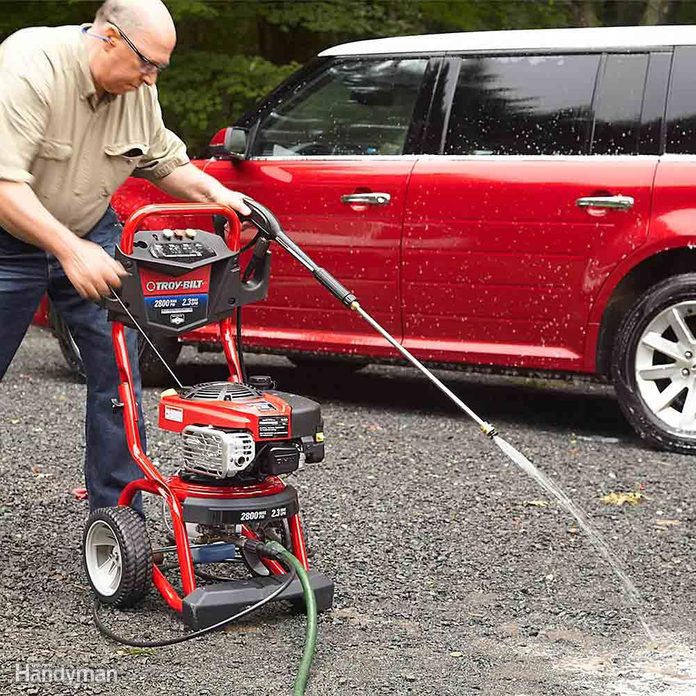
Purge the Hose
Once you’ve connected the garden hose from the spigot to the pressure washer, don’t be too eager to turn on the pressure washer. Instead, squeeze the trigger for roughly 30 seconds until a nice, steady stream comes out. This releases the air from the hose and preps the machine for a strong blast. This is a good idea for proper pressure washer maintenance.

Choose the Right Pressure Washer Nozzle
Nozzles are one of the most important pressure washer parts. They’re calibrated in degrees, and the lower the number, the narrower and more powerful the stream. I experimented with various nozzles and settled on three: For dousing the concrete with detergent, a 65-degree worked well. For the actual cleaning, a 25-degree was fastest. For tough areas, I used a 15-degree nozzle. Pick up a 5-in-1 dial nozzle (about $25 at home centers) to make changes quick and easy.

Pressure Washers Can Damage Concrete
You would never use a 0-degree nozzle to wash concrete, but I couldn’t resist giving it a try. Make sure you’re buying the right pressure washer. I used a 3,100-psi gas pressure washer and placed a 0-degree nozzle just a few inches from the concrete. In seconds, I carved a zigzag line with ease. After 45 seconds, the pressure washer left a small crater. Pressure washers can deeply damage concrete, but it’ll take some effort. In normal circumstances, all you really need to worry about is light surface etching.

Experiment on a Less Visible Spot
If you hold the nozzle too close to the driveway, the pressure can etch the concrete surface. The distance depends on the power of your pressure washer and the nozzle you’re using. Try experimenting on an inconspicuous spot and see how close you can get without damaging the concrete.
Plan ahead and work from top to bottom. If your roof, siding and retaining walls need to be washed, do them first. Otherwise, dirty water will run off those surfaces and ruin your clean driveway. Find out why pressure washing your roof isn’t a good idea.

Use a Detergent
Concrete detergent is incredibly effective. I tried pressure washing without it, and the result didn’t come close. It helps remove stubborn oil, paint and dirt stains. I used Zep Driveway & Concrete Pressure Wash detergent, but many great options are available. New pressure washers often include a soap tank to apply the detergent. Wave the wand back and forth roughly 8 in. off the surface to create a nice lather. Let it sit for 10 minutes and then wash. Don’t pour bleach or other chemicals into your pressure washer soap tank.

Spot-Treat Stains
Before you clean the entire surface, spot-treat the oil stains. I saturated these stains with diluted concrete detergent solution from a spray bottle. Let the soap sit for 10 minutes, then rinse with the pressure washer. Some stains are tough to remove—paint stains clean up quickly, but oil and rust stains take longer. If your stain isn’t disappearing, treat it a few more times with a less diluted solution.

Start at the Top of Your Driveway
Start at the high end of your driveway and work your way down. You don’t want dirty water running over the places you just cleaned. That might sound obvious, but it’s easy to start at the bottom without thinking about it. Also, be sure to park the pressure washer near the high spot so you’re dragging the hose behind you, rather than constantly kicking it out of your way.
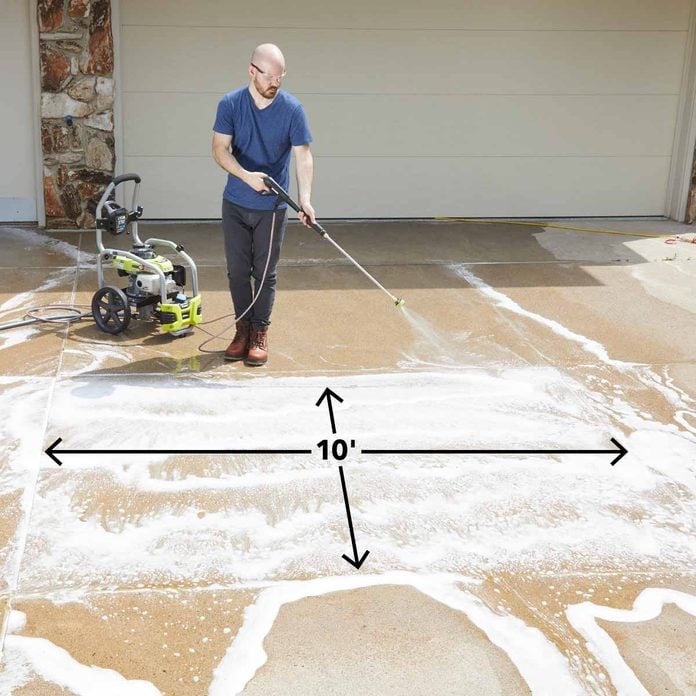
Work in Sections
If you spray your entire driveway with soap all at once, it’ll settle and dry before you can wash it off, which could leave white stains and streaks. Instead, soap and wash in 10 x 10-ft. sections. On my driveway, I found the joints in the concrete to be a natural guide.
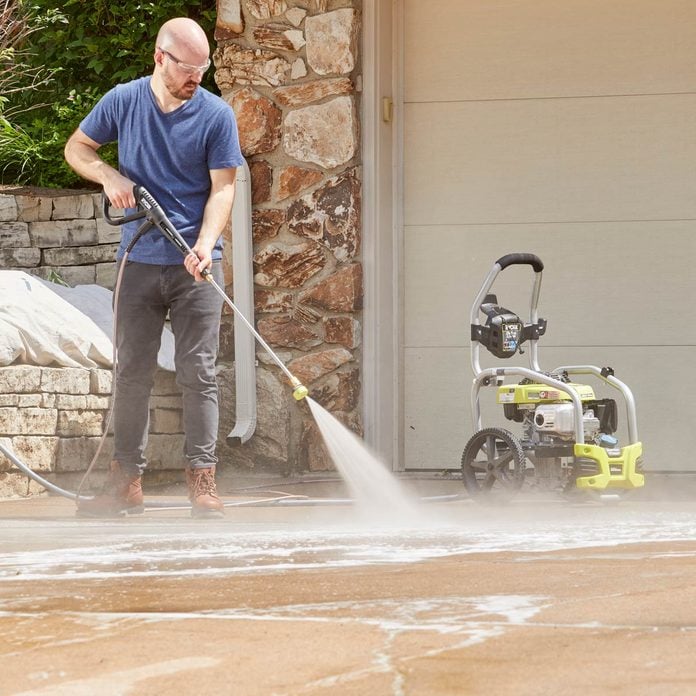
Move Toward the Edges
Whether you’re applying the soap or washing, start at the center of the driveway and work your way toward the edge. If you’re using a nozzle, sweep the water back and forth.

Extend Your Reach
Pressure washers are no fun to lug around. Do yourself a favor and buy a pressure washer extension hose. They come in 25-ft. and 50-ft. lengths. I attached a 50-ft. hose to the 25-ft. hose that came with the machine.

Get a Surface Cleaner
It takes a lot of time and effort to clean a driveway with a nozzle. You can cut both in half by using a pressure washer surface cleaner. As you use it, pull it from side to side rather than pushing it. Also, hold the wand upright to avoid putting pressure on your back.

Rinse Your Plants
Even with a tarp, soap can still find its way onto your plants. The plants also can absorb the soapy runoff at the roots. When you’re finished pressure washing, rinse the plants around your driveway with a garden hose.
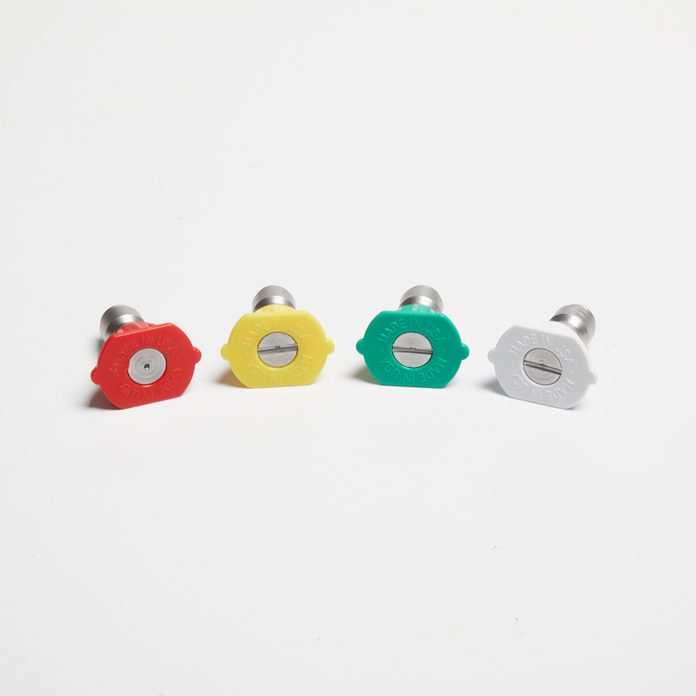
Wash Edges with a Nozzle
The surface cleaner doesn’t clean the edges along retaining walls, posts or other structures, so you have to clean those with a nozzle. Use a 25-degree nozzle for deep cleaning and a 40-degree nozzle for rinsing away standing water.
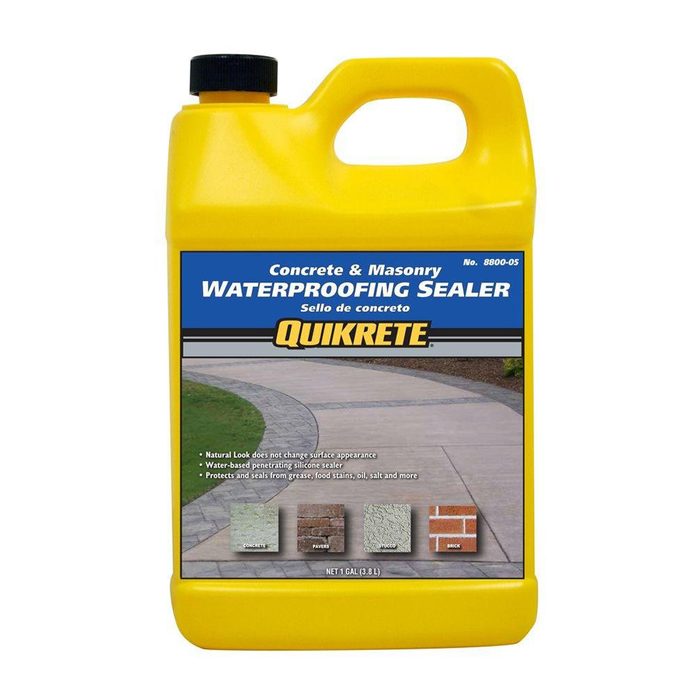
Protect Your Driveway with a Sealant
After you’ve done the work to clean your driveway, consider sealing it with concrete sealer. A good sealer will protect your driveway, help it last longer and make future cleaning much easier. Be sure the driveway is dry before you begin.